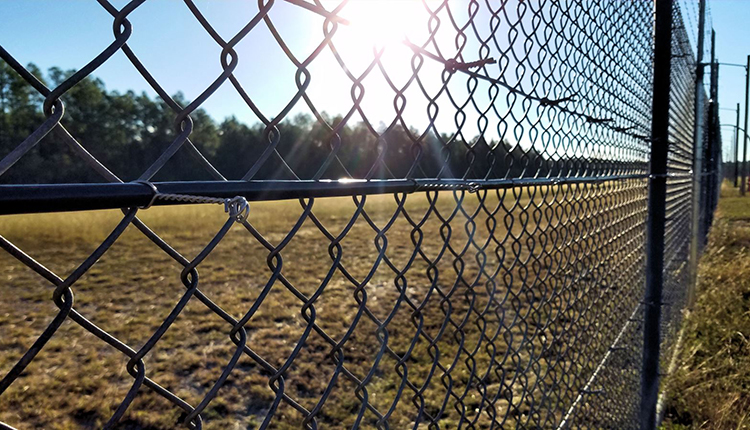The Value of a Fiber Optic Security System in Protecting Critical Infrastructure and Facilities
The Ultimate Guide to Fiber Optic Safety And Security Systems for Your Company
In a period where safety worries are extremely important for services, comprehending the intricacies of fiber optic modern technology can be transformative. This guide lays out exactly how integrating fiber optic security systems not just enhances information protection yet also supplies advantages like resistance to disturbance and real-time tracking capacities.
Understanding Fiber Optic Modern Technology

The core of a fiber optic cord contains a thin glass or plastic facility, surrounded by a cladding layer that shows light back right into the core. fiber optic security system. This style ensures minimal loss of signal toughness, also over substantial distances. There are two main types of fiber optic cables: single-mode and multi-mode. Single-mode fibers are made for long-distance transmission, while multi-mode fibers are appropriate for much shorter ranges, usually made use of within structures.
Fiber optics are not just much faster but also much more safe and secure than typical circuitry. Their integral resistance to electro-magnetic interference and the difficulty of touching right into the signal without discovery make them a preferred option for companies focusing on data stability and security. As companies significantly count on safe and secure and efficient interaction systems, recognizing fiber optic technology comes to be crucial for informed decision-making.
Trick Advantages of Fiber Optic Safety
When thinking about safety and security choices for a company, the benefits of fiber optic systems are particularly engaging. Fiber optic innovation supplies remarkable information transmission speeds and data transfer ability, making it ideal for dealing with high-resolution video feeds from surveillance cams. This capacity makes certain that safety workers receive real-time information, boosting general reaction times to potential protection dangers.
Furthermore, fiber optic cables are naturally resistant to electro-magnetic interference, which can jeopardize the integrity of standard copper-based systems. This resistance guarantees that the information transferred remains safe and continuous, giving a much more reliable protection facilities. In addition, fiber optics are much less vulnerable to physical damages, as they are made from glass as opposed to steel, reducing upkeep costs and downtime.
Fiber optic systems offer improved cybersecurity features, consisting of file encryption capabilities that shield sensitive information from unapproved accessibility. Collectively, these advantages make fiber optic safety and security systems a durable option for services seeking to enhance their safety steps.
Setup Process and Considerations
Thinking about the complexities entailed, the installation procedure of fiber optic safety and security systems requires mindful planning and implementation. The preliminary step includes a comprehensive site analysis to recognize optimal locations for cabling and tools. This analysis must take into consideration environmental factors, existing infrastructure, and prospective susceptabilities.

In addition, the installation must abide by local building regulations and sector requirements. This might consist of collaborating with different stakeholders such as structure supervisors, IT groups, and safety and security employees to guarantee seamless combination with existing systems.
Post-installation, strenuous screening is essential to confirm system efficiency and recognize any type of issues that may emerge. By prioritizing these factors to consider during the installment process, businesses can make sure a durable and reliable fiber optic safety and security system that meets their specific safety and security requirements.
Most Current Advancements in Fiber Optic Security
Recent wikipedia reference improvements in fiber optic innovation have actually considerably enhanced the capacities of safety systems for organizations. Among one of the most significant developments is the combination of fiber optic sensors that can detect vibrations and invasions along the perimeter of a facility. These sensing units give real-time tracking, allowing fast action to possible breaches.
In addition, the growth of distributed fiber optic picking up technology permits the constant surveillance of big locations with a solitary fiber cord. This approach not just lowers installment expenses however also enhances the dependability of checking systems by eliminating the requirement for several, separate sensing units.
Furthermore, advancements in multiplexing strategies have actually made it possible for services to send huge amounts of data over fiber optic networks, enhancing the abilities of video clip monitoring systems. High-def video feeds can currently be sent over fars away without loss of top quality, making sure that safety and security employees have access to clear and actionable information.
Last but not least, making use of artificial knowledge (AI) combined with fiber optic systems is transforming threat detection. AI algorithms can evaluate information from fiber optic networks to identify unusual patterns or actions, enabling aggressive security actions. These innovations jointly represent a significant leap onward in fiber optic safety modern technology.
Picking the Right System for Your Business
Choosing the proper fiber optic protection system for your service is vital for ensuring optimal defense and peace of mind. To make an enlightened option, examine your details safety requirements, taking into consideration aspects such as the fiber optic security system dimension of your properties, the nature of your operations, and possible vulnerabilities.
Begin by assessing the level of protection called for; as an example, risky settings might require advanced systems with incorporated surveillance and breach detection capabilities. Next off, think about scalability; as your company expands, your safety system should can broadening to suit raised demands without significant overhauls.
In addition, explore the dependability and efficiency of different systems. Search for service providers with recognized track records and consumer testimonies that attest to their service top quality. It's also recommended to ask about the technology's compatibility with existing framework, ensuring a smooth integration process.
Conclusion
In conclusion, fiber optic safety and security Check This Out systems offer a robust service for enhancing organization safety infrastructures. The most current technologies further reinforce the efficiency of these systems, guaranteeing that organizations remain safe and secure and versatile in an ever-evolving threat landscape.